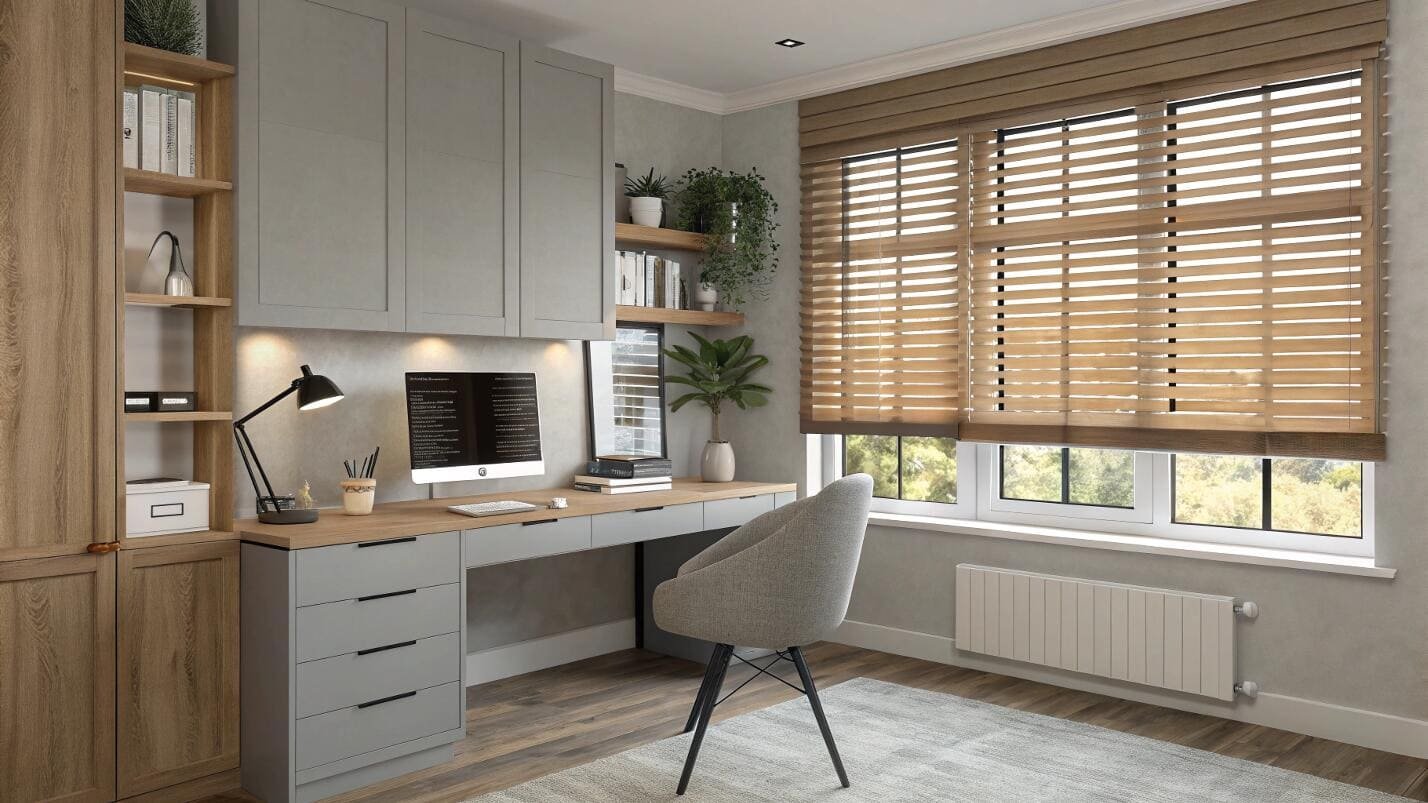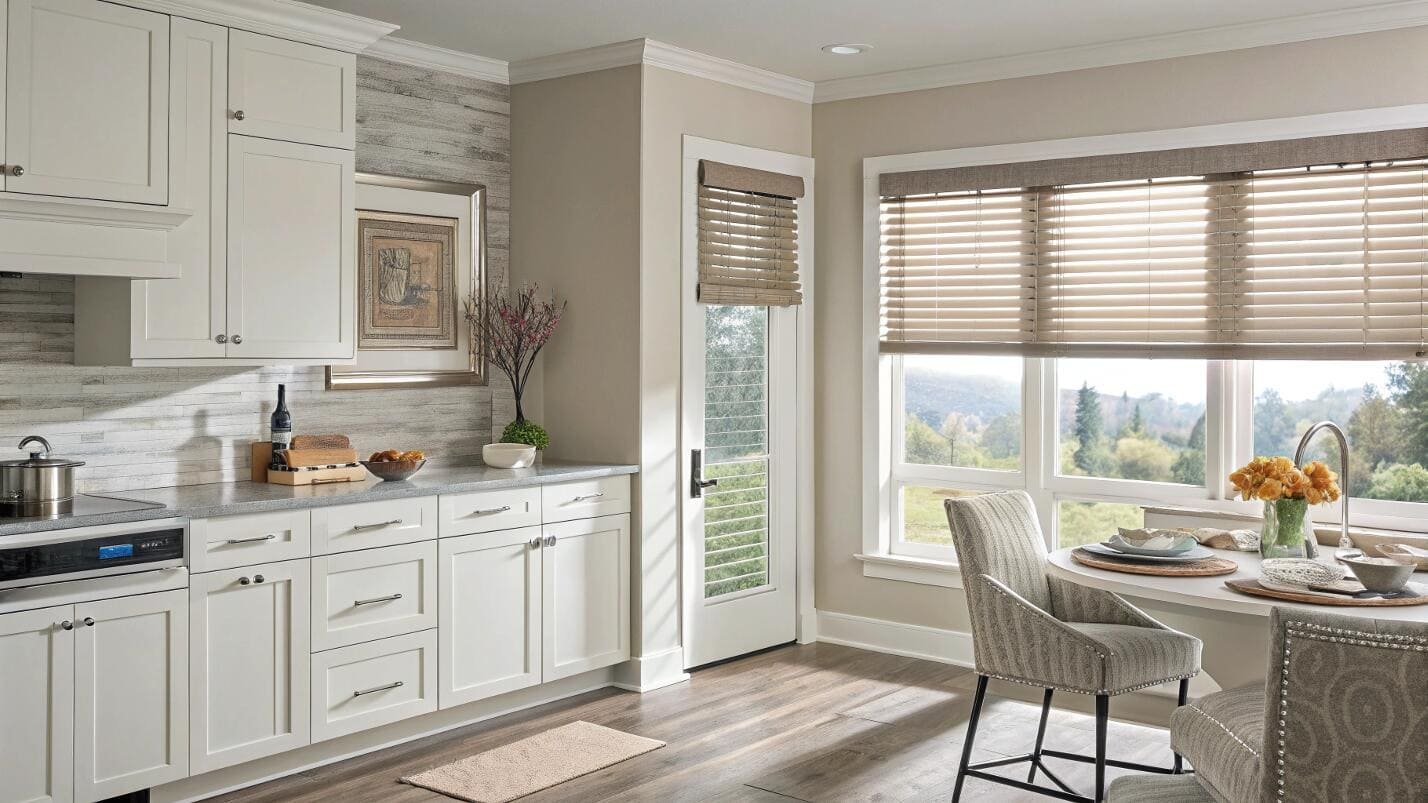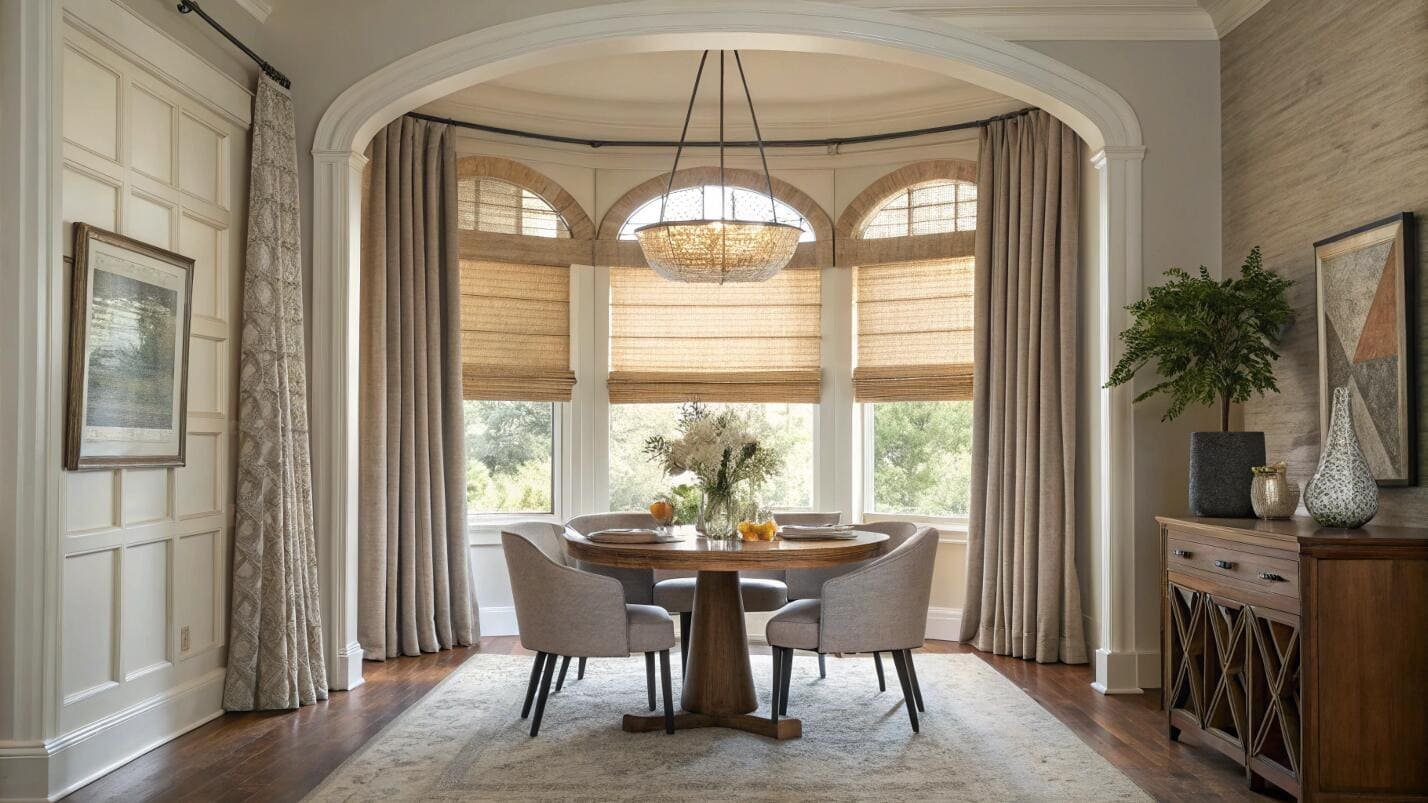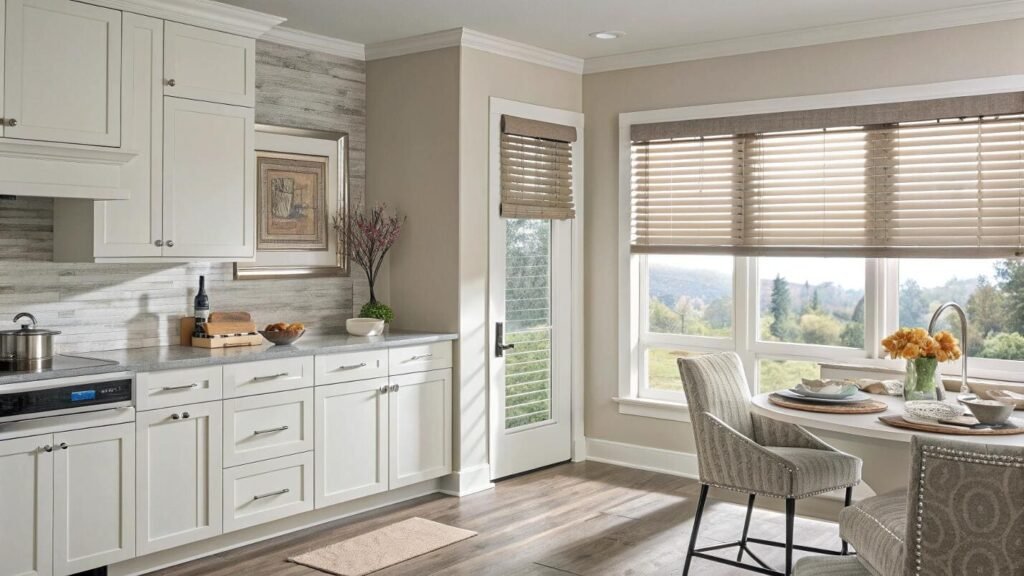Choosing between blinds, shades, and curtains is overwhelming. The wrong decision can disrupt a room's entire design and function, leading to a disappointed client.
Blinds use hard slats for light control[^1]. Shades are single fabric panels great for privacy. Curtains are soft drapes used for decorative warmth and style. Your room's specific need for function versus style will determine the best choice.

As a window treatment supplier, I talk to designers and contractors every day about this exact question. Many people think these products are interchangeable, but they are three distinct tools for three different jobs. Understanding the core strength of each one is the key to mastering your specifications. You need to think about the primary goal for the window: is it precise light management, cozy insulation, or a bold decorative statement? The answer to that question will immediately point you in the right direction.
Should I get blinds or just curtains?
You're stuck between the clean function of blinds and the soft look of curtains. One feels too stark, while the other can feel too traditional or bulky for the space.
Choose blinds for precise light control, privacy, and a clean, minimalist look. Opt for curtains when you want to add softness, color, texture, and a decorative frame to the window.

This is the classic "function versus fashion" dilemma. I always advise my clients to think of blinds as an architectural element of the room. They are a hard-wired part of the window, designed to control light and privacy[^2] with precision. Their horizontal lines create a sense of structure. Curtains, on the other hand, are a decorative element, like a piece of art or a throw pillow. Their main job is to add softness, absorb sound, and introduce color and pattern.
For a home office where controlling screen glare is critical, blinds are the clear winner. For a formal dining room where you want to create a grand, luxurious atmosphere, floor-to-ceiling curtains are the obvious choice. The decision comes down to the primary purpose of the window treatment in that specific room. Is it a workhorse or a showpiece?
Can you mix blinds and curtains in a room?
You love the privacy of a shade but also want the softness of a curtain. You worry that combining them will make the window look too busy or cluttered.
Yes, layering blinds or shades with curtains is an excellent design strategy. This approach combines the functional light control of the blind with the decorative warmth and style of curtains for a complete solution.

This is one of my favorite solutions to recommend to designers like Emma, because it truly offers the best of both worlds. It’s a very common high-end solution that solves multiple problems at once. The strategy is simple: you install a functional "hard" treatment like a roller shade, cellular shade, or blind inside the window frame. This becomes your workhorse for daily privacy and light filtering. For a bedroom, a blackout roller shade is perfect for ensuring total darkness for sleep.
Then, you add stationary decorative curtain panels on a rod mounted outside the window frame. These curtains don't need to be functional or close all the way. Their job is to frame the window, add color and texture, and soften the entire look. This layered approach looks incredibly sophisticated and is extremely practical. It provides ultimate control over light and privacy while allowing for endless stylistic expression with the curtain fabric.
What is more expensive, blinds or curtains?
Your project has a strict budget. You need to know where blinds, shades, and curtains fall on the price spectrum[^3] to allocate funds effectively without sacrificing quality.
Basic, off-the-shelf blinds are generally the cheapest option. However, custom-made curtains from high-end fabrics can be significantly more expensive than even premium motorized blinds or shades. The price depends entirely on material, size, and customization.

It’s a misconception that curtains are always more expensive, or that blinds are always the budget option. The reality is that all three categories have a massive price range. You can buy a small vinyl mini-blind for less than twenty dollars. But a large, custom-made hardwood blind with a smart motor can cost hundreds.
Similarly, a simple pair of polyester curtain panels from a big-box store might be very affordable. But if you are working with an interior designer to have custom drapes made from imported silk or velvet, considering the cost of the fabric, the lining, the specialized hardware, and the professional labor for sewing, the final price can easily run into thousands of dollars for a single window. When I provide quotes, I always break down the cost drivers. For our shades, the value is in the performance fabric and the reliable motorization. For curtains, the cost is in the fabric and the craftsmanship.
Cost Breakdown
| Treatment | Budget Range | Premium Range | Key Cost Drivers |
|---|---|---|---|
| Blinds | $ | $$$ | Material (Vinyl vs. Wood), Size, Motorization |
| Shades | $$ | $$$$ | Fabric Type, Operating System (Manual vs. Motorized) |
| Curtains | $$ | $$$$$ | Fabric Type, Custom Labor, Hardware, Fullness |
Which offers better long-term value: blinds, shades, or curtains?
You need a window treatment that will last. An option that looks good on day one but fails, fades, or falls apart after a few years is not a good investment.
High-quality blinds and shades, particularly motorized options, offer superior long-term value. Their durable materials and robust mechanisms provide consistent performance for a decade or more, while curtains can fade, stain, or go out of style.
Durability and timelessness are the cornerstones of long-term value[^4]. While curtains can add a lot of style, the fabrics are susceptible to sun-fading, staining, and absorbing odors over time. They can also look dated as design trends change.
A high-quality blind or shade, on the other hand, is built for performance. Our VelaBlinds products, for example, use UV-stabilized materials that resist fading and warping, and our motorized systems are engineered for thousands of cycles of flawless operation. A clean, motorized roller shade installed today will look just as modern and function just as perfectly ten years from now. This reliability and timeless aesthetic mean a lower total cost of ownership. You install it once and your client enjoys its benefits for years, without the need for replacement or repair. That's true value.
What makes a room look bigger, curtains or blinds?
You're designing for a small space. The wrong window treatment can make a compact room feel even more crowded and claustrophobic, undoing all your other design work.
Blinds or shades that match the wall color make a room look bigger. Their clean lines and low profile create a seamless, uncluttered look. Curtains that are heavy or dark can make a room feel smaller.

To make a room feel larger, you want to reduce visual clutter. Blinds and shades excel at this. When you choose a color that is the same as or very similar to the wall color, the window treatment blends in. It doesn't draw the eye or break up the clean plane of the wall, which tricks the brain into perceiving the space as larger and more open. A motorized shade is even better for this, as the absence of cords creates the ultimate minimalist look.
Curtains can be used to create an illusion of height, but they add more visual weight to the room. If you do use curtains in a small space, the trick is to mount the rod as close to the ceiling as possible and extend it well beyond the window frame on both sides. This makes the window itself appear taller and wider. Use sheer, light-colored fabrics rather than heavy, dark drapes that will absorb light and close in the space.
How do blinds, shades, and curtains compare for energy efficiency and insulation?
Windows are a major source of heat loss in winter and heat gain in summer. The right window treatment can significantly impact a building's energy bills and a client's comfort.
Cellular shades are the undisputed winner for insulation due to their air-trapping honeycomb structure. Heavy, lined curtains are also very effective. Blinds offer the least amount of insulation due to their slatted design.
This is a question of physics. To insulate, you need to trap a layer of air. Cellular shades were engineered specifically for this purpose. Their honeycomb-shaped pockets trap air, creating a thermal barrier[^5] that dramatically reduces heat transfer. A high-quality cellular shade can cut winter heat loss by 40% or more.
Heavy, interlined curtains also work well by creating a thick, insulating barrier. It's important that they are wide enough to cover the whole window and long enough to reach the floor or sill to prevent air from circulating around them. Blinds, because they are made of hard materials with many gaps between the slats, are the least effective insulators. They encourage airflow (convection) right at the window pane, which is the enemy of insulation. For any project where energy efficiency[^6] is a key performance indicator, I always point clients toward our cellular shade collection first.
Which window treatment works best for different rooms: kitchen, bedroom, living room?
You understand the products, but now you need to apply that knowledge. Placing the wrong type of treatment in a room can lead to practical failures, like putting a fabric shade in a splash zone.
Use moisture-resistant faux wood blinds in kitchens and baths. Use blackout shades or layered curtains in bedrooms for darkness. Use elegant curtains, versatile blinds, or stylish shades in living rooms to match the decor.

Matching the product to the room's function is the final and most critical step. Based on the hundreds of projects I've supplied, there are some clear best practices that ensure client satisfaction.
Room-by-Room Guide
- Kitchen & Bathroom: The main enemies here are moisture and grime. Faux wood blinds are the perfect solution. They are waterproof, so they won't warp or grow mold, and you can easily wipe them clean.
- Bedroom: The top priority is usually privacy and light control for sleep. A blackout cellular shade or roller shade is ideal. Layering them with decorative curtains adds softness and an extra sound buffer.
- Living Room: This space is all about aesthetics and versatility. The choice is wide open. Elegant Roman shades can add a tailored look. Real wood blinds provide a classic, stately feel. Curtains can create a cozy or grand atmosphere. Here, the choice is driven almost entirely by the overall design style of the project.
Conclusion
Blinds offer structured light control, shades provide sleek function, and curtains add decorative softness. The best solution often lies in choosing the right one for the job, or layering them for ultimate performance.
---
[^1]: Explore this link to discover how different window treatments can optimize light control in your space.
[^2]: Learn about the various window treatment options that enhance privacy while maintaining style.
[^3]: Get insights into the cost range of different window treatments to budget effectively.
[^4]: Explore which window treatments are worth the investment for durability and style.
[^5]: Understand how certain window treatments create thermal barriers for better insulation.
[^6]: Learn about the best window treatments for energy efficiency and reducing utility bills.Partner with VelaBlinds for Your Next Project
Smart window treatments shouldn't be complicated. After working with 500+ distributors and contractors worldwide, I've streamlined the process to get you quality products, competitive pricing, and reliable support - every time.
Why project professionals choose VelaBlinds:
- ✅ Fast, Accurate Quotes - Detailed specs and pricing within 24 hours
- ✅ Transparent Pricing - No hidden fees, volume discounts clearly outlined
- ✅ Quality Assurance - Direct partnerships with certified OEM manufacturers
- ✅ Project Support - Dedicated account manager from quote to delivery
Start your next project:
📧 Quick Quote: Send your requirements to info@velablinds.com
📱 Direct Contact: WhatsApp +86 137 2012 8317
🌐 Browse Solutions: https://velablinds.com/
📁 Product Resources: Access spec sheets, catalogs & project files
Paul Chen, Founder
"I built VelaBlinds to solve the real challenges I faced as a project buyer - long lead times, unclear specs, and unreliable suppliers. Let's discuss how we can power your projects with smarter blinds."
Serving distributors and contractors across North America, Europe, and Australia since 2018.




